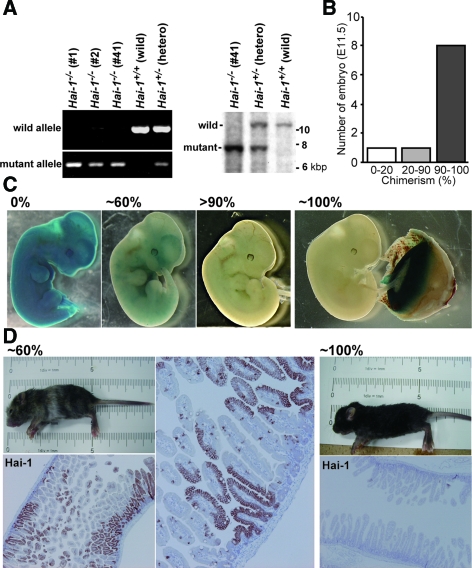Figure 1.
Establishment of B6Hai-1−/− ES cells and generation of embryo chimeras. A: Genotyping of ES cells in C57BL/6 background. Representative results of PCR and Southern blot analysis are shown. In the PCR study, 588-bp and 280-bp products for wild-type allele and mutant allele, respectively, were detected. In Southern blot analysis, 10.3-kbp product and 7.7-kbp fragments for wild-type allele and mutant allele, respectively, were detected. B: Efficiency of chimera production. Chimeras were generated by injection of B6Hai-1−/− ES 1 cells into blastocysts isolated from Ayu8104/ICR/LacZ mouse. The extent of chimerism of each embryo (E11.5) was judged by LacZ staining. C: Representative results of LacZ staining of embryo (E11.5) of B6Hai-1−/− ES 1-Ayu8104/ICR/LacZ blastocyst chimera. The placenta tissue of ∼100% B6Hai-1−/− ES 1 chimera embryo showed strong LacZ staining, confirming that the placenta tissue was in fact derived from Hai-1/Spint1+/+ Ayu8104/ICR/LacZ. D: Evaluation of the extent of chimerism by hair color and Hai-1/Spint1 immunostain. The intestinal tissue was immunostained with anti-Hai-1/Spint1 antibody. The extent of chimerism in the intestinal tissue was proportional to the chimerism judged by the coat color.

